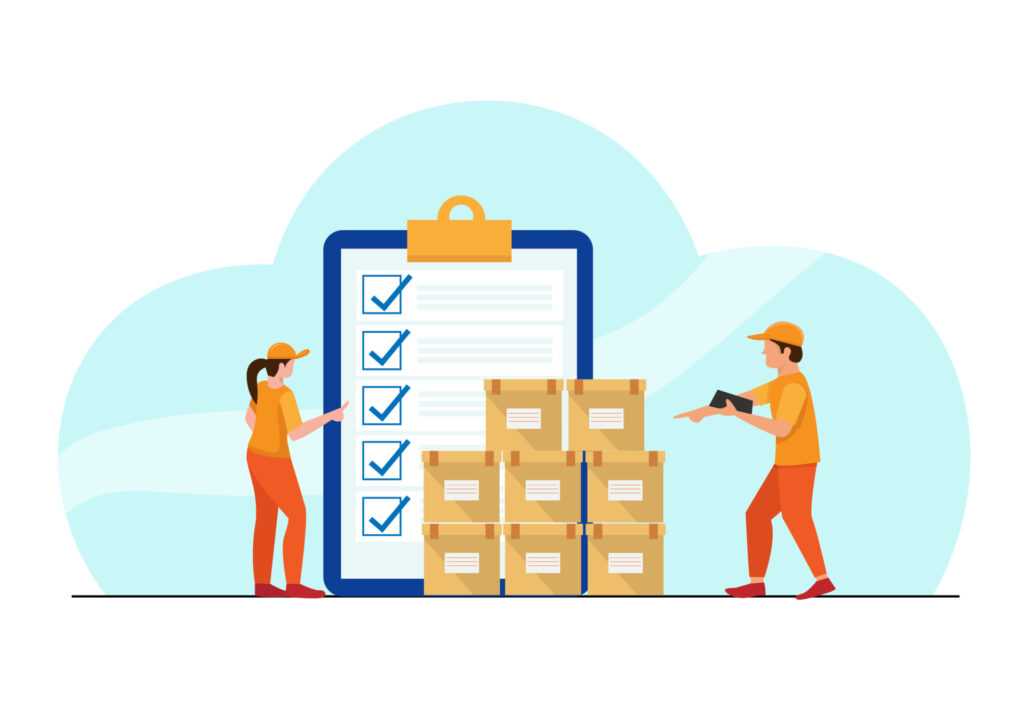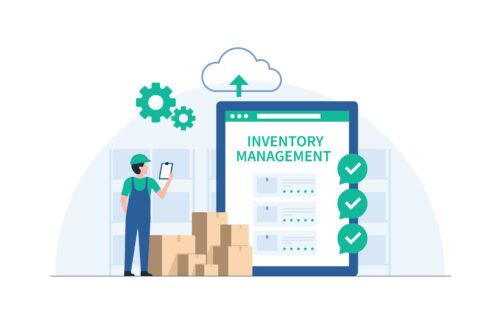Discover the most common mistakes in inventory management for small business and learn practical tips to keep your stock organized, reduce costs, and boost efficiency.
If you are a small business owner, managing inventory can feel like walking a tightrope. Too much stock? Your cash flow takes a hit. Too little? You risk losing customers. Been there, done that—and let me tell you, it’s no fun. But don’t worry, you’re not alone.
Many small business owners make the same inventory mistakes over and over again. The good news? These missteps are totally avoidable once you know how to get started.
Develop a strategy FIRST and do not try to wing it!! What will be your inventory management plan and which inventory management method will you use for the process?
In this article, we will explore common pitfalls that need to be addressed at a strategic level and share actionable tips to help you master inventory management for small business like a pro.
What is Inventory Management for Small Business?
Unlike supply chain management, inventory management deals with receiving, tracking and storing physical or digital products in your business to generate data to make informed future purchases.

Supply chain, on the other hand, deals with the flow of products from raw goods and production sourcing through to final distribution.
Ignoring the Importance of Accurate Inventory Tracking
One of the biggest mistakes? Skipping accurate inventory tracking altogether. Trust me, those mental notes or outdated spreadsheets aren’t cutting it. Without a reliable system, you might overspend on products you don’t need or understock items your customers love.
Solution
- Invest in inventory tracking solutions like software tailored for small businesses. Tools like these can automate your records and keep everything neat and tidy.
- Use barcode systems for inventory to speed up stock counts and reduce human error.
- Schedule regular physical inventory counts to verify your digital records match reality.
Overlooking Demand Forecasting
Have you ever stocked up on something, only to realize nobody wants it? Same here!!. That’s what happens when you skip demand forecasting for inventory. It’s like trying to drive blindfolded—you’re bound to crash.
Solution
- Study your sales trends. Which products fly off the shelves? Which ones gather dust?
- Incorporate seasonal trends into your seasonal inventory planning.
- Use your data to set accurate reorder points for your most popular items.
Neglecting Inventory Turnover Rates
Stock that just sits there? It’s tying up your money and wasting valuable space. High inventory turnover is key to keeping your small business nimble and efficient.
Solution
- Regularly calculate your inventory turnover optimization rate. (Divide your cost of goods sold by your average inventory value.)
- Focus on moving slow-moving products with promotions or discounts.
- Implement inventory categorization methods like ABC analysis to prioritize your best sellers.
Not Having a Back Up Plan
Stuff happens! A supplier runs late, or your best-selling item’s demand skyrockets unexpectedly. Without a plan, your whole operation could screech to a halt.
Solution
- Build relationships with multiple suppliers to avoid dependency.
- Keep a small reserve of high-demand items as part of your inventory replenishment strategies.
- Regularly review and update your inventory management systems to ensure they are robust enough to handle the unexpected.

Relying on Outdated Methods
Still using pen and paper or a clunky Excel sheet? It’s time to join the 21st century. Outdated methods lead to mistakes, wasted time, and unnecessary stress.
While inventory management can be done manually, the simplest and most reliable solution is to use a software program that automates your inventory management processes.
Solution
- Upgrade to cloud-based inventory solutions for real-time access to your stock levels from anywhere.
- Explore user-friendly inventory management tools that integrate with your other business software.
- Automate your inventory replenishment to save time and reduce human error.
Conclusion: Inventory Management For Small Business Mistakes
Inventory management in small business can feel overwhelming, but it doesn’t have to be. By avoiding these common mistakes—like ignoring demand forecasts or sticking to outdated methods—you can save time, reduce costs, and keep your customers happy. Remember, the goal isn’t perfection but progress.
So, take a deep breath, tackle one area at a time, and watch your business thrive. If you need assistance, Contact Us Today! Got any inventory management hacks of your own? Share them in the comments—We would love to hear your tips!
Related Articles
FAQs About Inventory Management in Small Business
What’s the best way to track inventory in a small business?
The best way to track inventory is to use inventory software for small business that automates the process. Pair it with regular physical inventory counts for accuracy.
How can I reduce surplus inventory?
To reduce surplus inventory, focus on demand forecasting, offer promotions for slow-moving items, and avoid overordering by setting clear reorder point calculations.
How often should I audit my inventory?
You should audit your inventory at least quarterly. Regular inventory audits for small business help ensure accuracy and highlight discrepancies.
Why is inventory turnover important?
High inventory turnover means your products are selling quickly, freeing up cash flow and reducing storage costs. Implementing inventory turnover optimization strategies can help improve it.
What’s the best software for inventory management for small business?
The best software depends on your needs, but look for inventory management tools with features like real-time inventory tracking, demand forecasting, and reporting capabilities.
References
Fabregas, K (2024) How to Manage Inventory Effectively (2025 Guide) https://www.forbes.com/advisor/business/software/how-to-manage-inventory/
Rivera, D (2024) How to Organize Inventory for Small Businesses in 9 Steps https://fitsmallbusiness.com/inventory-management-for-small-business/

